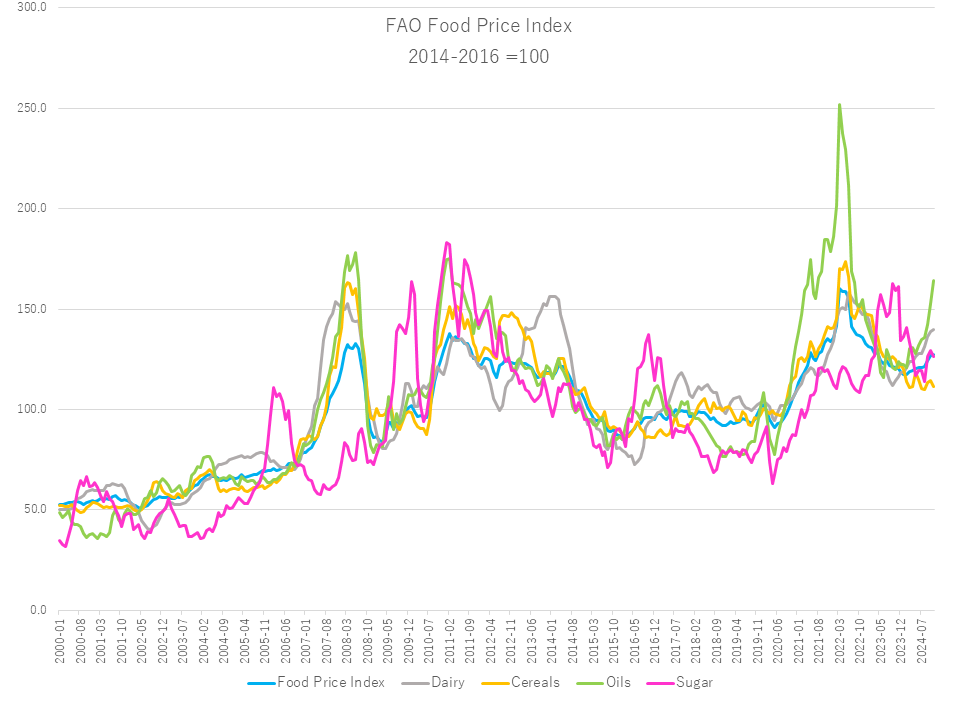Pick Up
1156. Global Food Price Trends for November 2024

1156. Global Food Price Trends for November 2024
The Food and Agriculture Organization of the United Nations (FAO) released its World Food Price Trends on December 6. The value in November 2024 averaged 127.5 points, up 0.5% from October and the highest level since April 2023. This was due to the fact that the rise in dairy and cooking oil prices slightly outpaced the decline in meat, grain, and sugar prices. This figure was 5.7% higher than last year, but 20.4% lower than the all-time high in March 2022.
The grain price index fell 2.7% month-on-month and 8.0% year-on-year to 111.4 points in October. Global wheat export prices reflected increased supply from the southern hemisphere harvest and improved 2025 production prospects for northern hemisphere exporters. In addition, sluggish international demand also contributed to the price decline. Global maize prices remained stable due to antagonistic factors. Favorable weather and continued sowing in South America, weak demand for Ukrainian maize, and seasonal factors due to the harvest season in the U.S. put downward pressure on prices, while strong demand for U.S. maize in Brazil and Mexico supported prices. On the other hand, the rice price index fell by 4.0%, reflecting factors such as increased competition in the market, the harvest season and the depreciation of the exchange rate against the US dollar.
The vegetable oil price index rose 7.5% month-on-month, the highest since July 2022. The price increase reflected an increase in the palm, soybean, sunflower, and rapeseed price indicators. International palm oil prices rose for the sixth month in a row, maintaining premiums over other edible oils amid expectations of global production cuts due to heavy rains in Southeast Asia. Soybean prices also continued to fluctuate, reflecting strong global import demand, and rapeseed and sunflower oil prices also rose on the back of tighter global supply prospects.
Dairy prices increased by 0.6% from the previous month, but were 20.1% higher than the previous year. Milk powder and butter prices are rising, especially in response to demand in Western Europe.
Sugar prices fell 2.4% month-on-month in November and 21.7% lower than a year ago, after two months of increase in September and October. November's decline comes as juicing in India and Thailand has begun, while concerns about the upcoming season in Brazil have eased. Rainfall in the southern Brazilian region during the month disrupted the harvest, but it also improved soil moisture and boosted crop conditions for the next crop after a long drought. The depreciation of the Brazilian real against the US dollar and the decline in international oil prices also contributed to the decline in world sugar prices.
Contributor: IIYAMA Miyuki, Information Program
